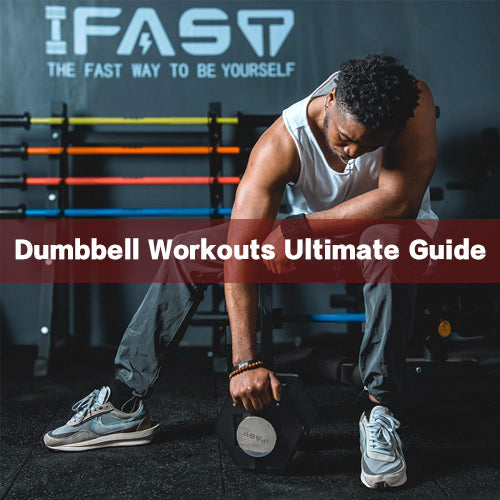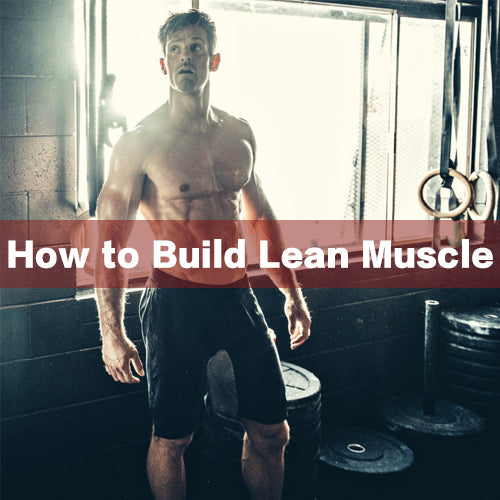Are you looking to sculpt your chest and achieve that well-defined, powerful upper body?
The chest fly machine can be a game-changer in your fitness routine.It’s a staple in many gyms, offering a safe and effective way to target your chest muscles. While often seen as a "beginner" exercise, the chest fly machine can be a valuable tool for lifters of all levels, helping to sculpt and define your pecs.
Table of content
What is a Chest Fly Machine?
The chest fly machine, also known as the pec deck machine, is designed specifically to isolate and work the pectoral muscles. Unlike free weights, which require more stabilization, the machine guides your movement along a fixed path, making it easier to focus on the muscle contraction and reduce the risk of injury.

Key Features:
- Adjustable Seat and Backrest: Ensure proper alignment with the machine's handles.
- Handles: Gripped during the exercise to perform the fly motion.
- Weight Stack: Adjustable to vary the resistance.
What Does the Fly Machine Work?
The chest fly machine typically consists of a padded seat, adjustable weight stacks, and converging arms with handles. You sit on the seat, adjust the weight, and then push the handles together in an arc-like motion, bringing them towards your midline. This movement contracts your chest muscles, sculpting and defining your pecs.
Chest Fly Machine Muscles Worked

The chest fly machine primarily targets the pectoralis major and minor, the two main muscles that make up your chest.
Pectoralis Major: This large, fan-shaped muscle covers the upper portion of your chest and is responsible for chest flexion (bringing your arm across your body) and internal rotation.
Pectoralis Minor: Located beneath the pectoralis major, this smaller muscle plays a role in supporting the shoulder joint and contributes to chest wall stability.
Strong and defined pectorals not only enhance your physique but also improve posture, stability, and pushing power in exercises like bench press and push-ups.
How to Use Chest Fly Machine?
To maximize the benefits and prevent injuries, it's crucial to use proper form when using the chest fly machine.
Step-by-Step Guide:
1.Adjust the Machine: Set the seat height so that your elbows are level with your shoulders when gripping the handles.
2.Select Your Weight: Start with a light weight to warm up and get comfortable with the movement.
3.Position Yourself: Sit with your back firmly against the pad, feet flat on the floor, and grip the handles.
Perform the Exercise:
- Starting Position: Extend your arms to the sides, elbows slightly bent, and grip the handles.
- Movement: Squeeze your chest muscles to bring the handles together in front of you. Keep a slight bend in your elbows throughout.
- End Position: When the handles are almost touching, pause and squeeze your chest.
- Return: Slowly return to the starting position, maintaining control.
Common Mistakes to Avoid
Using Momentum: Swinging or using body momentum reduces the effectiveness of the exercise.
Incomplete Range of Motion: Failing to achieve a full stretch or contraction limits muscle engagement.
Excessive Weight: Using too much weight can lead to poor form and reduced muscle activation.
Neglecting the Negative: The eccentric (lowering) phase is crucial for muscle growth. Control the return movement.
Hunching Shoulders: Keep your shoulders down and back to maintain proper form and target the chest effectively.
Why the Chest Fly Machine Reigns Supreme

The chest fly machine offers several advantages for chest training:
Isolation and Focus: Unlike compound exercises like bench press, the machine isolates the chest muscles, minimizing involvement from other muscle groups. This allows for targeted development of your pecs.
Beginner-Friendly: The fixed path of motion and machine support make chest fly machines ideal for beginners who are still learning proper form.
Reduced Risk of Injury: The controlled movement pattern minimizes stress on your joints, making it a safer alternative to free weight chest exercises.
Scalability: The machine allows you to adjust the weight to match your fitness level, making it suitable for lifters of all abilities.
Mind-Muscle Connection: The machine facilitates focusing on the contraction in your chest muscles, leading to a better mind-muscle connection.
Variations on the Chest Fly Machine
To keep your workouts varied and challenging, consider these chest fly machine variations and adjustments:
Single-Arm Chest Fly
Perform the exercise one arm at a time to address any muscle imbalances and increase core engagement.
Reverse Grip Chest Fly
Use a reverse grip to slightly alter the angle and engagement of the chest muscles.
High-to-Low Fly
Adjust the machine so that your hands start higher and move downward as you bring them together, targeting the lower chest more effectively.
Decline Chest Fly
Adjusting the seat to a decline position places greater stress on the lower pectoralis major, helping to develop that sculpted chest definition.
Incline Chest Fly
An incline chest fly position targets the upper pectoralis major and the clavicular head (upper chest). This can be helpful for building a well-rounded chest physique.
Wide Grip Chest Fly
A wider grip on the handles places more emphasis on the outer chest muscles, creating a wider chest appearance.
Chest Fly Machine Alternatives
The chest fly machine offers a controlled and beginner-friendly way to target your chest muscles, but there are several effective alternatives you can consider to add variety and challenge to your workouts.
Free Weight Alternatives (require good form and balance):
Dumbbell Fly

This classic exercise replicates the chest fly motion but with dumbbells. You can perform them on a flat bench, incline bench, or decline bench to target different portions of your chest.
Cable Fly

Similar to the chest fly machine, cable flyes use cables and handles but offer more freedom of movement. You can adjust the cable position for various angles and emphasize different parts of your chest.
Floor Fly

A bodyweight exercise, floor flyes are great for beginners or those with limited equipment. Lie on the floor with your arms outstretched and perform a fly motion with minimal weight.
Bodyweight Alternatives (suitable for beginners):
Push-Ups

A fundamental chest exercise, push-ups target multiple muscle groups, including your chest, shoulders, and triceps. There are various push-up variations (incline, decline, diamond) to adjust the difficulty and target different areas.
Dips

If you have access to dip bars, dips are another excellent bodyweight exercise that utilizes your chest muscles for pushing movements. You can modify dips by placing your feet on the floor or a platform for support.
Integrating the Chest Fly Machine into Your Routine
As a pre-exhaust: Perform chest flyes before your main pressing movements to fatigue the pecs and enhance mind-muscle connection.
As a finisher: Use the machine at the end of your workout for a final burn and pump.
In a superset: Pair chest flyes with a pressing movement for increased intensity and time efficiency.
Sample Chest Workouts
Beginner Workout
- Bench Press: 3 sets of 10 reps
- Chest Fly Machine: 3 sets of 12 reps
- Push-Ups: 3 sets of 15 reps
- Cool Down: Stretching and light cardio
Intermediate Workout
- Incline Dumbbell Press: 3 sets of 8 reps
- Chest Fly Machine: 4 sets of 10 reps
- Cable Crossovers: 3 sets of 12 reps
- Dips: 3 sets to failure
- Cool Down: Stretching and foam rolling
Advanced Workout
- Flat Bench Press: 4 sets of 6 reps
- Chest Fly Machine: 4 sets of 8 reps
- Decline Dumbbell Press: 3 sets of 10 reps
- Plyometric Push-Ups: 3 sets of 12 reps
- Cable Flys: 3 sets of 15 reps
- Cool Down: Advanced stretching and mobility work
Progressive Overload Strategies
To continually make gains, progressive overload is key. Here are ways to apply this principle to chest fly machine workouts:
- Increase Weight: Gradually add weight as you become stronger.
- Increase Reps: Aim to perform more reps with the same weight.
- Increase Sets: Add an extra set to your routine.
- Decrease Rest Time: Shorten rest periods between sets to increase workout density.
- Improve Form: Focus on perfecting your technique and range of motion.
Nutrition and Recovery for Chest Growth

Remember, muscle growth happens outside the gym. To support your chest development:
- Protein Intake: Aim for 1.6-2.2 grams of protein per kilogram of body weight daily.
- Caloric Surplus: To build muscle, consume slightly more calories than you burn.
- Rest and Sleep: Allow at least 48 hours between chest workouts and prioritize 7-9 hours of sleep nightly.
- Hydration: Stay well-hydrated to support muscle recovery and growth.
FAQs
What is a chest fly machine?
A chest fly machine is a piece of gym equipment designed to isolate and work the pectoral muscles through a fly motion, where the arms move in a wide arc.
What are the benefits of using the chest fly machine?
It isolates the chest muscles, improves chest definition, and provides a controlled movement that reduces the risk of injury compared to free weights.
Which muscles does the chest fly machine target?
The primary muscles targeted are the pectoralis major and minor (chest muscles). It also engages the shoulders and triceps to a lesser extent.
How does it compare to other chest exercises?
It provides a focused isolation of the chest muscles compared to compound movements like the bench press, which also heavily engage the shoulders and triceps.
How do I use the chest fly machine correctly?
Adjust the seat so that the handles are at chest level. Sit with your back flat against the pad, feet flat on the floor. Grab the handles with a slight bend in your elbows, and bring them together in a controlled manner, squeezing your chest at the top.
What are the key points to remember for good form?
Keep a slight bend in the elbows, avoid locking out your arms, maintain a controlled movement, and avoid letting the weights slam back together.
How should I incorporate the chest fly machine into my workout routine?
Use it as part of your chest workout, ideally after compound movements like the bench press. It can be included 1-2 times per week.
How many sets and reps should I do?
Start with 3 sets of 10-12 reps, adjusting based on your fitness level and goals.
How does the chest fly machine compare to dumbbell flyes or other chest exercises?
The chest fly machine provides more stability and control compared to dumbbell flyes, reducing the risk of injury. However, dumbbell flyes allow for a greater range of motion and engage stabilizing muscles more.
Conclusion
The chest fly machine is a great device that can be used to build and sculpt the muscles of your chest. With these benefits in mind, proper form mastered, and inclusion as part of work out routine, a strong and defined upper body can be achieved. Do not forget to incorporate machine exercises with other body weight movements as well as free weights so that you have holistic exercise sessions. The above will help you maximize your results by remaining consistent, focusing on progressive overload, eating right, and taking enough rest to recuperate.
Ready to take your chest workouts to the next level? Head to the gym, set up the chest fly machine, and start seeing those gains! Happy lifting!


